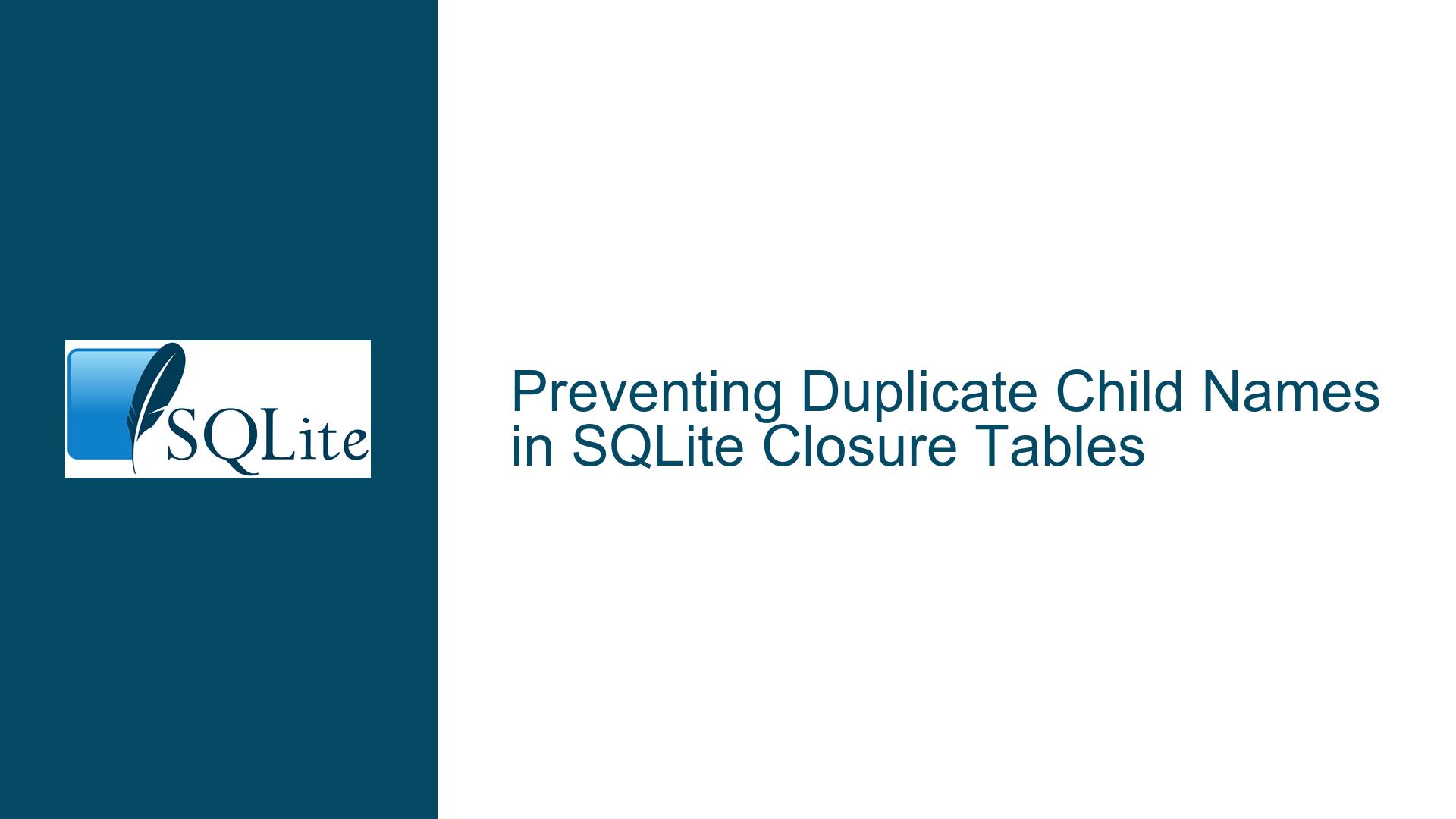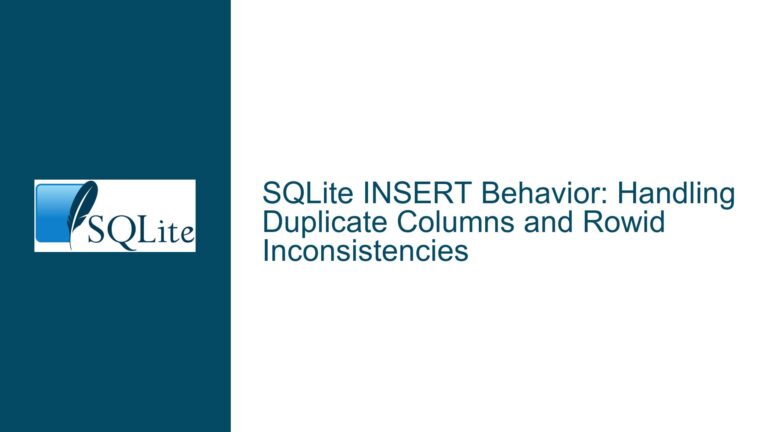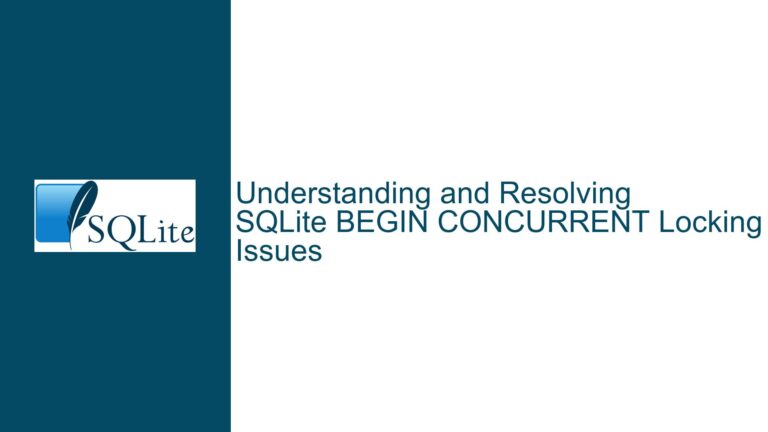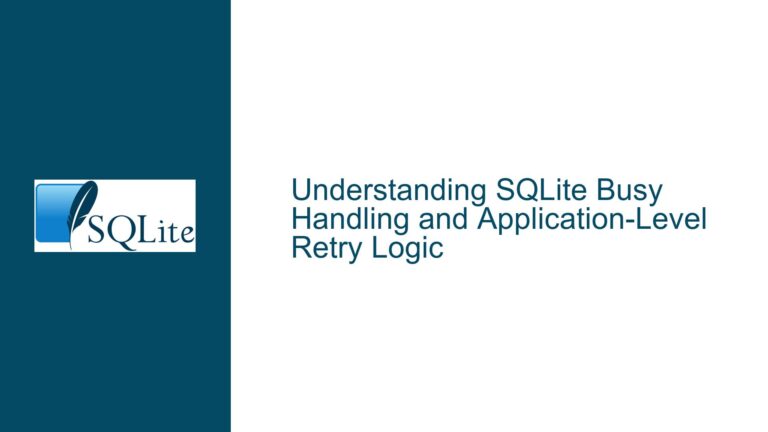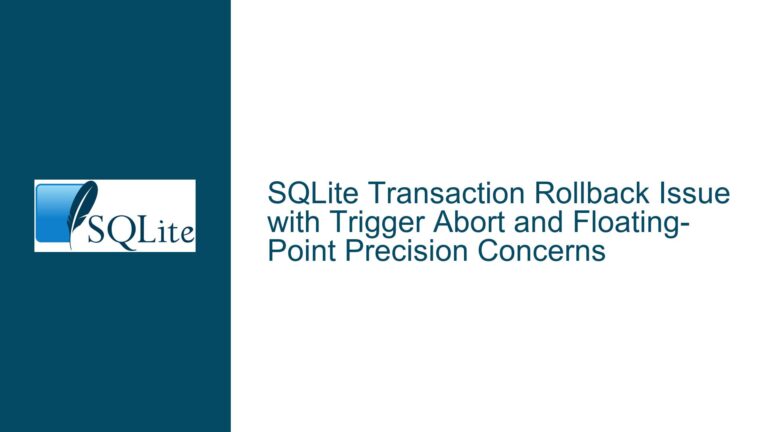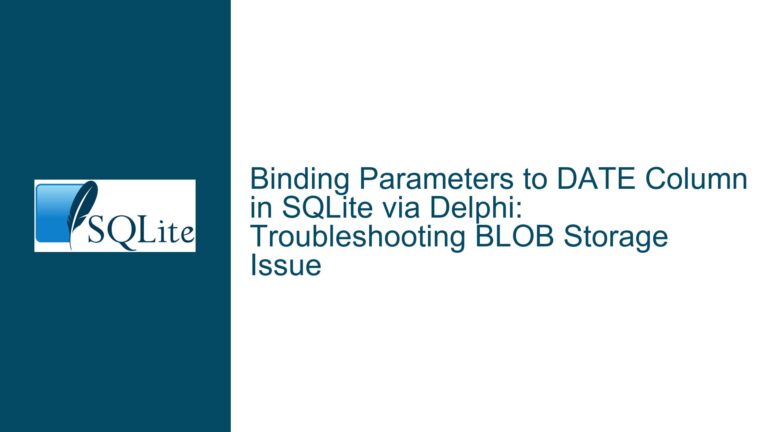Preventing Duplicate Child Names in SQLite Closure Tables
Enforcing Unique Child Names per Parent in a Closure Table Structure
In database design, particularly when using closure tables to model hierarchical relationships, ensuring data integrity is paramount. One common requirement is to enforce uniqueness constraints on child nodes under the same parent. For instance, in a system managing raw materials and intermediate products, it is often necessary to prevent duplicate names for child nodes within the same parent branch. This ensures that each node in the hierarchy is uniquely identifiable, which is critical for accurate data retrieval and manipulation.
The closure table pattern is a powerful tool for representing hierarchical data, but it introduces complexities when enforcing constraints like unique child names. Unlike traditional parent-child relationships, closure tables store all paths between nodes, making it challenging to implement straightforward uniqueness checks. This issue is further compounded when dealing with nested hierarchies, where a child node might itself be a parent to other nodes.
To address this, we need to delve into the specifics of SQLite’s capabilities, particularly its support for triggers and constraints. The goal is to create a mechanism that prevents the insertion of a child node with a name that already exists under the same parent. This involves understanding the relationships between the asset_tree and asset_node tables, as well as the role of triggers in enforcing business rules.
Misconfigured Triggers and Unintended Data Relationships
One of the primary challenges in enforcing unique child names per parent in a closure table structure is the potential for misconfigured triggers. Triggers are essential for enforcing complex constraints that cannot be handled by simple UNIQUE or CHECK constraints. However, if not properly designed, triggers can either fail to enforce the desired rules or introduce unintended side effects.
In the provided schema, the no_duplicate_childname_per_parent trigger is intended to prevent the insertion of a child node with a name that already exists under the same parent. However, the initial implementation has several issues. First, the trigger attempts to reference asset_node.node.old, which is not a valid reference in SQLite. This syntax error prevents the trigger from functioning as intended. Additionally, the trigger’s logic does not correctly account for the hierarchical relationships between nodes, leading to potential false positives or negatives in the uniqueness check.
Another issue arises from the use of last_insert_rowid() within the trigger. This function returns the rowid of the most recent INSERT operation, but its behavior can be unpredictable when used in triggers, especially in complex transactions involving multiple tables. This can lead to incorrect comparisons and ultimately fail to enforce the uniqueness constraint.
Furthermore, the schema design itself introduces potential pitfalls. The asset_tree table uses a self-referential foreign key to model the parent-child relationships, while the asset_node table stores the actual node names. This separation of structure and data requires careful coordination to ensure that constraints are applied correctly. Without proper indexing and query optimization, the trigger’s performance can degrade significantly, especially in large datasets.
Implementing Robust Triggers and Indexing Strategies
To effectively enforce unique child names per parent in a closure table structure, we need to implement a robust trigger mechanism and optimize the underlying schema for performance. The revised trigger should correctly identify the parent of the newly inserted node and compare its name against the names of its siblings. This requires a clear understanding of the relationships between the asset_tree and asset_node tables, as well as the use of appropriate indexing strategies to ensure efficient query execution.
The corrected trigger should use a JOIN operation to traverse the hierarchy and identify sibling nodes. By joining the asset_tree table with itself, we can determine the parent of the newly inserted node and then compare its name against the names of its siblings stored in the asset_node table. This approach ensures that the uniqueness constraint is enforced correctly, regardless of the depth of the hierarchy.
Here is the revised trigger implementation:
CREATE TRIGGER no_duplicate_childname_per_parent
BEFORE INSERT ON asset_node
BEGIN
SELECT RAISE(FAIL, 'A parent cannot have two children with the same name')
FROM asset_node AS sibling_node
JOIN asset_tree AS sibling_tree ON sibling_node.node_id = sibling_tree.id
JOIN asset_tree AS parent_tree ON sibling_tree.parent_id = parent_tree.id
JOIN asset_tree AS new_tree ON new_tree.parent_id = parent_tree.id
WHERE new_tree.id = NEW.node_id
AND sibling_node.node = NEW.node;
END;
This trigger works by joining the asset_node table with the asset_tree table to identify sibling nodes. The parent_tree alias represents the parent of the newly inserted node, while the sibling_tree alias represents its siblings. The NEW.node_id and NEW.node references ensure that the trigger compares the name of the newly inserted node against the names of its siblings.
To optimize performance, we should also ensure that the relevant columns are properly indexed. The asset_tree table should have an index on the parent_id column to speed up the JOIN operations, while the asset_node table should have an index on the node column to facilitate quick lookups. Here are the necessary index creations:
CREATE INDEX idx_parent_id ON asset_tree(parent_id);
CREATE INDEX idx_node ON asset_node(node);
These indexes ensure that the trigger’s JOIN operations execute efficiently, even in large datasets. By combining a robust trigger mechanism with optimized indexing strategies, we can effectively enforce the uniqueness constraint on child names per parent in a closure table structure.
In addition to the trigger and indexing strategies, it is also important to consider the broader context of the database schema. The asset_tree table should include a CHECK constraint to prevent a node from being its own parent, as this would create a circular reference and violate the hierarchical structure. The asset_node table should also include a UNIQUE constraint on the node_id and node columns to ensure that each node has a unique name within its parent’s context.
Here is the revised schema with these constraints:
CREATE TABLE IF NOT EXISTS asset_tree(
id INTEGER PRIMARY KEY NOT NULL,
parent_id INTEGER REFERENCES asset_tree(id)
CHECK(id <> parent_id),
CONSTRAINT u_id_parent UNIQUE(id, parent_id)
);
CREATE TABLE IF NOT EXISTS asset_node(
node_id REFERENCES asset_tree(id),
node TEXT,
CONSTRAINT u_node_id_node UNIQUE(node_id, node)
);
By implementing these constraints, we can further enhance the integrity of the hierarchical data structure and prevent potential issues that could arise from circular references or duplicate node names.
Finally, it is important to consider the transactional nature of the operations. The insertion of a new node involves multiple steps: inserting a record into the asset_tree table, inserting a record into the asset_node table, and potentially updating other related tables. To ensure atomicity and consistency, these operations should be wrapped in a transaction. This ensures that either all operations are completed successfully, or none are applied, preventing partial updates that could lead to data inconsistencies.
Here is an example of a transactional insertion:
BEGIN TRANSACTION;
INSERT INTO asset_tree (parent_id) VALUES (NULL);
INSERT INTO asset_node (node_id, node) VALUES (last_insert_rowid(), 'new inserted asset');
COMMIT;
By wrapping the insertion operations in a transaction, we can ensure that the database remains in a consistent state, even in the event of an error or interruption.
In conclusion, enforcing unique child names per parent in a closure table structure requires a combination of robust trigger mechanisms, optimized indexing strategies, and careful schema design. By addressing the potential pitfalls and implementing the necessary constraints and optimizations, we can ensure the integrity and performance of the hierarchical data model.
